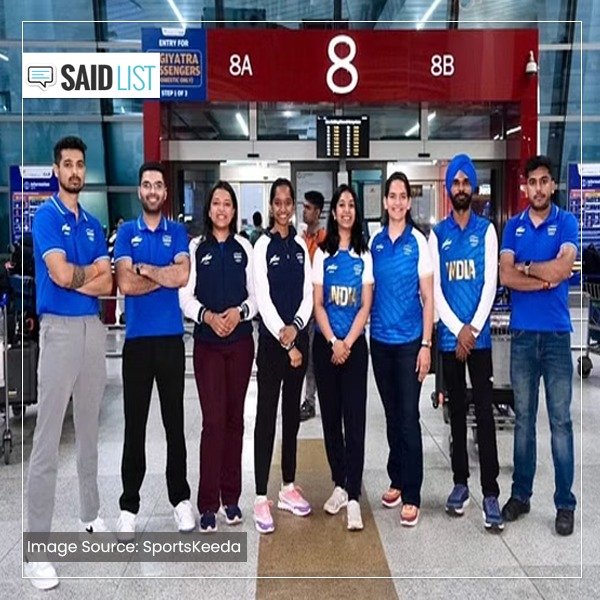After reading about the colonial criminalisation of workers at the Kolar Gold Field mines in Janaki Nair’s intriguing work, I was thrilled to see the movie KGF, coincidently running in theatres. Originally a Kannada production, director and writer Prashant Neel presents the two-part, 155 minutes saga featuring Yash, Ramachandra Raju and Srinidhi Shetty dubbed in multiple languages.
I watched the Hindi dubbed version of the film without taking a look at the trailer or reading anything about the film. KGF begins with a news agency anchor about to interview the author of a controversial, censored book. A book banned, burnt and prohibited by the state.
The interview seems to be set in the archives of the Vidhana Soudha, every archival researcher’s den for sources on Mysuru state records.
One man’s story
Excited by the initial scene, I thought the movie would be about the people of KGF, an extension or depiction of the labour communities from the archives.
Rather, the movie is about a ‘hero’ born from the soots of the mines, raised by a strong-willed mother who instils the need to acquire money, fame, and a name for himself before he dies. She is diagnosed with a terminal illness and in her last breath, she makes her son vow to be someone of worth. The adolescent hero begins his journey to conquer the ‘duniya’ (world). Initially, he is presented as henchman but towards the end, he is shown to have a mind and purpose of his own for pursuing certain henchman tasks.
The hero, the self-branded ‘Rocky’, makes a conscious choice to be a gold smuggler and later again, chooses to be branded (by hot iron) in the pit to trace the unlabelled gold of KGF.
It is not the usual rags to riches story. It is his individual pursuit to find the gold, his roots, and a sense of belonging. It is a making of a hero for the KGF series, rise of a star from the pit. He captures the feeling of the ‘pit’ from his intrinsic sense of perceiving his surrounding and people, a skill of his (pit) people. Though it is shot in the detrimental cyanide soils of KGF, the film fails to reflect on the ecological effect that these cyanide dumps and the extreme weather conditions have on the cookies.
Gold is more than a monetary element in the plot – it binds the hero with his people and his past. It depicts historical subjugation of coolie subalterns. Winning their hearts would not only make him a people’s hero, but it would also give him direct access to the KGF gold and power to rule different ‘duniyas’, the mafia and the cookies.
In a historical comparison, the gold mafia could be juxtaposed with the colonial capitalist forces (East India Company) and their least regard for the (Indian) coolies’ life. In the context of the film, the process of criminalisation is replaced with barbaric punishments, which is inflicted upon the coolies to instil fear.
The historical use of draconian laws to control the coolies is removed from the visuals of the celluloid. Colonial law creates fear in the psyche over a period of time. However, in the film, the visuals of immediate executions are jarring but have great theatrical effects of storytelling.
Too many macho men
The hero’s love interest is of no interest to the viewer. In fact, her father is more of an interest to the plot and is alongside the hero. Since the protagonist gets the stylistic rustic charm with empathy, the villain is given a primitive rawness to his appearance, emotions and actions.
The energy is masculine in its vibes, but it’s just too many men to look at on the screen. Exaggerated lionisation and corny dialogues roll in and out of the movie. The greatest put-offs for me were the hyper-masculine portrayal of men in the movie—the hero, villain, goons and men playing other roles.
Women are seen as progressive if they party hard and treat their beer right, any disrespect to beer can land a punch in your face from the ‘hero sir’. Yay! Bengaluru gets its beer recognition in a mass movie, or wait! Is it a prop? Either way, it’s there and the message is to treat the better-bitter-beer right. However, the labouring mother is given special attention, and her spirits are compared to the power of a hundred soldiers, thereby extending empathy towards women “like his mother”.
Reducing the historical context
The movie reduces a hundred years of collective history to an individual’s history, uprooting it from its original historical context—the tortured colonial past. The postcolonial context of the film, which is set in the 1980s, also features ‘his story’, not ‘history’ of (K.G.F.) the place and its people.
The film is shot in a dark contrast on a sepia background. The sharp dark contrast appears to illustrate the dehumanised life of the coolie workers and the hero’s traumatic background. The contrast, along with the music score, work well in favour of the plot and make the story more gripping. Great visuals, striking wide-angle shots draw more attention to the hero and make him appear a larger than life figure in the film and for the audience.
The plot goes back and forth in time—so does the narration, from its Sutradhar (Anant Nag), the journalist who wrote the book—to tell the story of his parents’ arrival in the mines. This is depicted as a mass capturing of people from their individual homes (slavery) and transporting (like castles) them to the mines as coolie workers.
The director chooses to pay more attention to the collective hope that the collective historical trauma. It is unclear if the hero’s triumph is for an untold personal goal or a larger collective coolie communal uprisal. It certainly would be worth the wait to find out. Well, we did patiently wait to know, “Why did Kattapa kill Bahubali?”.
<blockquote class=”twitter-tweet” data-lang=”en”><p lang=”en” dir=”ltr”>If I recall correctly, there are only two occasions when Rocky from KGF bleeds – 1. When he wanted his enemies to capture him so that he can hit them together and 2. When he gets a small cut and directors wanted to show he cleans the cut by applying sand. <a href=”https://t.co/Tq8dDG0kvR”>https://t.co/Tq8dDG0kvR</a></p>— Prajwal (@prajwalmanipal) <a href=”https://twitter.com/prajwalmanipal/status/1087238210961305600?ref_src=twsrc%5Etfw”>January 21, 2019</a></blockquote>
<script async src=”https://platfo
How Kannada film ‘KGF’ reduces a community’s history to one man’s macho storyhttps://t.co/3XEYOEGnE4
— Adwaitam™ (@adwaitology) January 21, 2019
Adastu Bega Barteevi…Yella Records Nu Gantu Moote Katkondu Ready Agiry🤭😆@TheNameIsYash Boss😎💪#KGF #Yash #YashBoss #KGFChapter2 pic.twitter.com/NGOusFy55x
— мαнα∂єναѕωαму уαѕн (@Thenamelsyash) January 21, 2019
Kamu tidak sendirian, suaraku ada selalu di sisimu.. Aku ingin tertawa bersamamu, aku ingin berbagi impianku bersamamu.. #kgf
— Arti lagu (@Quotesmutiara) January 21, 2019











